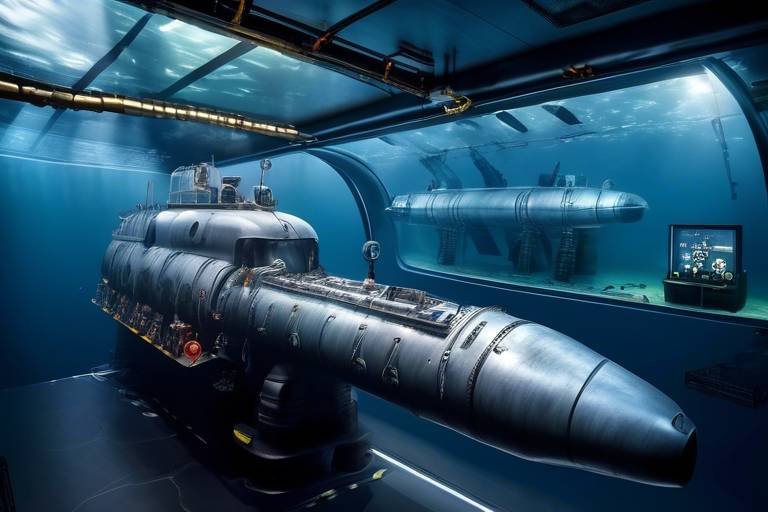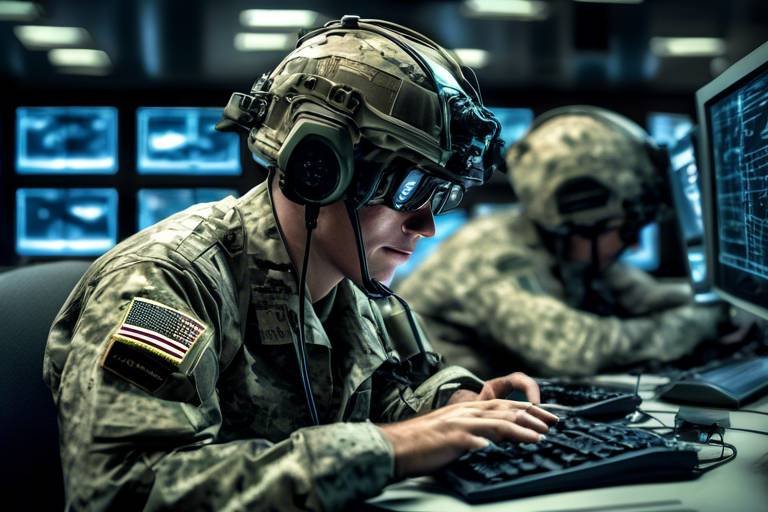Exploring Military Applications of Machine Learning Technologies
In today’s rapidly evolving technological landscape, machine learning has emerged as a game-changer across various sectors, and the military is no exception. This article delves into how machine learning is transforming military operations, enhancing decision-making, and improving efficiency across various domains, including logistics, intelligence, and combat scenarios. Imagine a battlefield where decisions are made not just on instinct but backed by powerful algorithms analyzing data at lightning speed. This is not science fiction; it's happening right now!
One of the most significant impacts of machine learning in military operations is the enhancement of decision-making. Military leaders are now equipped with algorithms that can process vast amounts of data in real-time, providing insights that were previously unimaginable. This capability improves situational awareness and operational effectiveness on the battlefield. Picture a commander receiving instant analysis of troop movements, weather patterns, and enemy positions all at once. It’s like having a crystal ball that reveals the best course of action amidst chaos.
The integration of machine learning in intelligence analysis has revolutionized how military organizations process information. Traditional methods of analyzing intelligence data can be slow and cumbersome, often leading to missed opportunities. Machine learning allows for faster processing, identifying patterns, and predicting enemy movements, which significantly enhances strategic planning and threat assessment. This is akin to having a super-sleuth on your side, tirelessly working to uncover insights that inform military strategies.
With the power of data mining techniques, machine learning algorithms can sift through massive datasets to uncover hidden insights. These techniques enable military analysts to spot trends and anomalies that inform tactical decisions. For example, analyzing social media data can reveal public sentiment and potential uprisings before they escalate, providing valuable intelligence on the ground. It’s like having a radar that detects not just what is happening, but what might happen next.
Predictive analytics is another vital component that helps military organizations anticipate future scenarios based on historical data. By leveraging past experiences, military units can prepare and adapt strategies proactively in dynamic conflict environments. This foresight is crucial in a world where the landscape can change overnight. Think of it as a military chess game where every move is calculated based on the opponent's past strategies.
Natural Language Processing (NLP) applications play a critical role in analyzing communications and documents. By helping military personnel understand sentiments and intentions behind enemy communications, NLP acts as a translator of motives. This technology can dissect intercepted messages, revealing not just the words used but the emotions and intents behind them, much like reading between the lines in a complex novel.
Automated surveillance systems are yet another area where machine learning shines. These systems leverage machine learning to analyze video feeds in real-time, identifying potential threats and reducing the workload on human operators during reconnaissance missions. Imagine a scenario where drones equipped with advanced algorithms can autonomously scan vast areas for unusual activities, alerting human operators only when necessary. This not only enhances security but also allows personnel to focus on critical decision-making tasks.
Machine learning is revolutionizing military logistics by optimizing supply chains, improving inventory management, and predicting equipment maintenance needs. This transformation is crucial for enhancing overall operational readiness. Just as a well-oiled machine runs smoothly, efficient logistics ensure that troops receive the necessary resources when and where they are needed most. The ability to predict when supplies will run low or when equipment needs servicing can make the difference between mission success and failure.
Advanced algorithms can forecast demand and streamline supply chains, ensuring that military units are always prepared. This capability is similar to having a personal assistant who not only reminds you of your schedule but also anticipates your needs before you even ask. By accurately predicting what resources will be required, military operations can run seamlessly, avoiding the pitfalls of delays and shortages.
Predictive maintenance powered by machine learning reduces downtime by forecasting equipment failures. This proactive approach allows military units to conduct timely repairs and maintain high operational efficiency. Imagine a scenario where a vehicle's health is monitored continuously, and alerts are sent out before a breakdown occurs. This not only saves time but also extends the lifespan of critical equipment, ensuring that the military is always ready for action.
- What is machine learning in military applications?
Machine learning in military applications refers to the use of algorithms and statistical models to analyze data, predict outcomes, and enhance decision-making processes in various military operations. - How does machine learning improve logistics in the military?
Machine learning optimizes supply chains, predicts equipment maintenance needs, and improves inventory management, ensuring resources are available when and where they are needed. - What role does predictive analytics play in military strategy?
Predictive analytics helps military organizations anticipate future scenarios based on historical data, allowing for proactive strategy adjustments in dynamic environments.
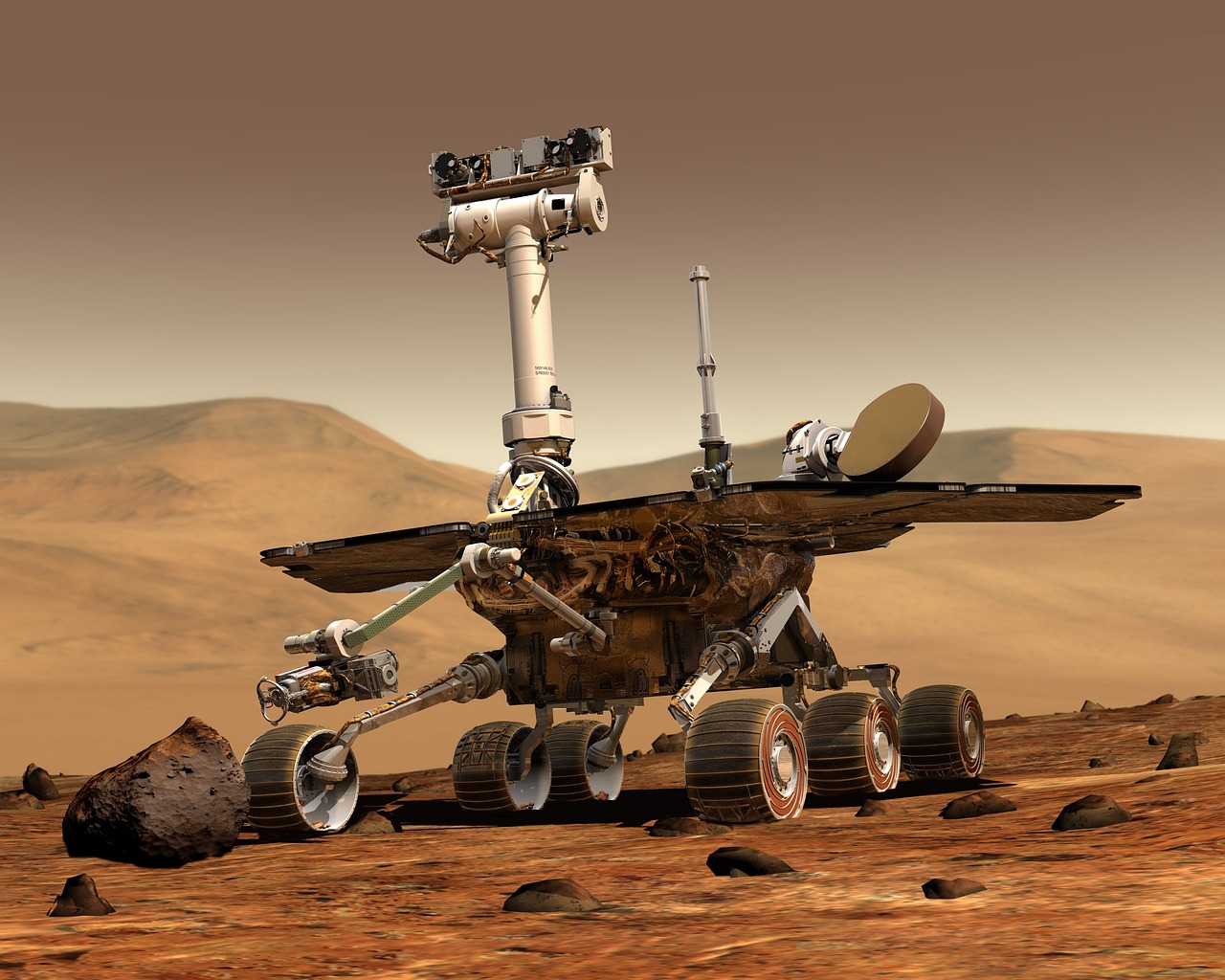
Enhancing Decision-Making
In the fast-paced world of military operations, decisions need to be made swiftly and accurately. This is where machine learning algorithms come into play, acting as a powerful ally for military leaders. By analyzing vast amounts of data in real-time, these algorithms provide insights that were previously unimaginable. Imagine trying to find a needle in a haystack; now, picture having a magnet that not only finds the needle but also tells you how many more needles are in the haystack. That’s the kind of transformation machine learning brings to decision-making in the military.
With machine learning, military leaders gain enhanced situational awareness. This means they can make informed choices based on comprehensive data analysis rather than relying solely on instinct or outdated information. For instance, during a combat scenario, commanders can access real-time data about enemy movements, troop positions, and environmental conditions. This capability allows them to adapt strategies on the fly, ultimately leading to improved operational effectiveness and mission success.
Moreover, machine learning helps in identifying patterns and trends that might go unnoticed by human analysts. For example, by examining historical data, machine learning can reveal recurring enemy tactics or predict potential hotspots for conflict. This predictive capability is akin to having a crystal ball that offers glimpses into the future, enabling military leaders to stay one step ahead of their adversaries.
Let's break down some of the key advantages of using machine learning in military decision-making:
- Speed: Machine learning algorithms can process data at lightning speed, allowing for rapid decision-making in high-stakes environments.
- Accuracy: By minimizing human error and bias, these algorithms improve the reliability of the information being analyzed.
- Scalability: Machine learning systems can handle vast datasets, making them suitable for modern military operations that generate enormous amounts of data.
Furthermore, the integration of real-time analytics into military operations enhances the decision-making process even further. For instance, during reconnaissance missions, machine learning can analyze video feeds from drones, automatically identifying potential threats or areas of interest. This not only reduces the workload on human operators but also increases the likelihood of catching critical information that could change the course of an operation.
In conclusion, the enhancement of decision-making through machine learning technologies is a game-changer for military operations. By providing timely and accurate insights, these technologies empower military leaders to make informed choices that can save lives, resources, and ultimately lead to mission success. In a world where every second counts, the ability to swiftly analyze data and adapt strategies is invaluable.
- How does machine learning improve situational awareness in the military?
Machine learning analyzes real-time data to provide comprehensive insights about battlefield conditions, enemy movements, and troop placements, enhancing situational awareness. - Can machine learning predict enemy movements?
Yes, machine learning can identify patterns in historical data, allowing military analysts to forecast potential enemy tactics and movements. - What role does real-time analytics play in decision-making?
Real-time analytics enables quick processing of information, allowing military leaders to adapt strategies based on the latest data during operations.
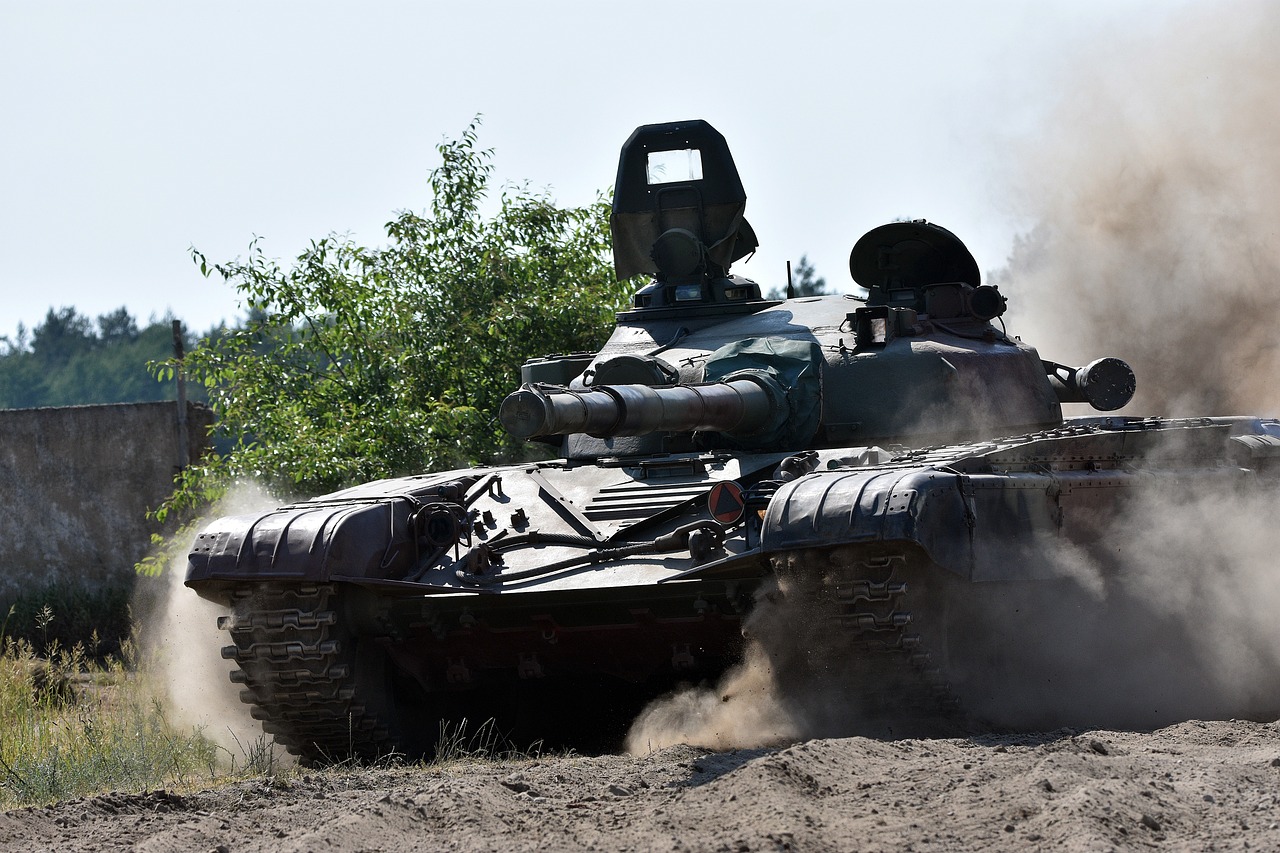
Intelligence Analysis
This article delves into how machine learning is transforming military operations, enhancing decision-making, and improving efficiency across various domains, including logistics, intelligence, and combat scenarios.
Machine learning algorithms are enabling military leaders to make more informed decisions by analyzing vast amounts of data quickly, thus improving situational awareness and operational effectiveness on the battlefield.
The integration of machine learning in intelligence analysis is a game-changer for military operations. It allows for faster processing of information, identifying patterns, and predicting enemy movements, which significantly enhances strategic planning and threat assessment. Imagine having the ability to sift through mountains of data in mere seconds—this is no longer a distant dream but a reality thanks to machine learning.
One of the most powerful features of machine learning in this domain is its data mining techniques. These techniques can sift through massive datasets to uncover hidden insights, enabling military analysts to spot trends and anomalies that inform tactical decisions. For instance, algorithms can analyze communication records, social media activity, and even satellite imagery to detect unusual patterns that may indicate potential threats.
Data mining techniques powered by machine learning can be likened to a treasure hunt where the treasure is crucial intelligence. By utilizing sophisticated algorithms, military analysts can dive deep into data pools, extracting valuable nuggets of information that would otherwise remain buried. This process not only saves time but also enhances the accuracy of intelligence assessments.
Predictive analytics is another powerful tool in the military's arsenal. It helps organizations anticipate future scenarios based on historical data, allowing them to prepare and adapt strategies proactively in dynamic conflict environments. Think of it as having a crystal ball that provides insights into potential future events, enabling military leaders to make informed decisions before situations escalate.
Natural language processing (NLP) applications also play a pivotal role in intelligence analysis. NLP facilitates the analysis of communications and documents, helping military personnel understand sentiments and intentions behind enemy communications. By processing and interpreting vast amounts of text data, NLP can reveal underlying motives or shifts in enemy strategies. This capability is crucial in forming a comprehensive understanding of the battlefield landscape.
Moreover, automated surveillance systems leverage machine learning to analyze video feeds in real-time, identifying potential threats and reducing the workload on human operators during reconnaissance missions. Imagine a watchful eye that never blinks—these systems can monitor multiple feeds simultaneously, ensuring that no suspicious activity goes unnoticed, which is vital for maintaining operational security.
Machine learning is revolutionizing military logistics by optimizing supply chains, improving inventory management, and predicting equipment maintenance needs, thereby enhancing overall operational readiness.
Advanced algorithms can forecast demand and streamline supply chains, ensuring that troops receive the necessary resources when and where they are needed most.
Predictive maintenance powered by machine learning reduces downtime by forecasting equipment failures, allowing military units to conduct timely repairs and maintain high operational efficiency.
- What is machine learning in the context of military applications?
Machine learning refers to the use of algorithms and statistical models to analyze and interpret complex data, enabling military operations to enhance decision-making and operational efficiency. - How does machine learning improve intelligence analysis?
It speeds up data processing, identifies patterns, and predicts enemy movements, thus enhancing strategic planning and threat assessment. - What are some examples of machine learning applications in the military?
Examples include automated surveillance systems, predictive maintenance for equipment, and advanced data mining techniques for intelligence analysis.

Data Mining Techniques
In the realm of military operations, have emerged as a game-changer, transforming how military analysts sift through the overwhelming amounts of data generated daily. Imagine trying to find a needle in a haystack, but instead of just one needle, there are thousands scattered throughout. This is where machine learning steps in, acting as a powerful magnet that pulls the most relevant information to the forefront. By employing various algorithms, military analysts can uncover hidden insights that might otherwise remain buried in the noise of data.
One of the most significant benefits of these techniques is their ability to identify patterns and anomalies within large datasets. For instance, machine learning algorithms can analyze historical data from past conflicts to detect trends that may indicate potential threats. This predictive capability allows military leaders to make informed decisions and adapt their strategies in real-time, enhancing overall operational effectiveness. The integration of these technologies not only speeds up data analysis but also improves accuracy, which is crucial in high-stakes environments.
To illustrate the impact of data mining in military contexts, consider the following key techniques that are widely used:
- Clustering: This method groups similar data points together, enabling analysts to identify patterns and relationships that might not be immediately apparent.
- Classification: By categorizing data into predefined classes, military personnel can quickly identify the nature of threats or operational needs.
- Association Rule Learning: This technique uncovers interesting relationships between variables in large datasets, helping to predict future occurrences based on historical data.
Moreover, the use of predictive analytics in conjunction with data mining techniques allows military organizations to forecast future scenarios based on historical data. This proactive approach is invaluable in dynamic conflict environments, where the ability to anticipate an adversary's next move can mean the difference between success and failure. For example, by analyzing past troop movements and engagements, military planners can create simulations that help them prepare for various potential outcomes.
Additionally, the advent of Natural Language Processing (NLP) has further enhanced data mining capabilities. NLP allows for the analysis of unstructured data, such as communications and social media, enabling military analysts to gauge sentiments and intentions behind enemy communications. This insight can lead to more informed strategic planning and improved threat assessments, as understanding the motivations of adversaries is crucial in modern warfare.
In conclusion, the integration of data mining techniques powered by machine learning is revolutionizing military operations. By enabling analysts to uncover hidden insights, predict future scenarios, and understand enemy intentions, these technologies are enhancing decision-making processes and operational effectiveness across the board. As military organizations continue to embrace these advancements, the battlefield of the future will undoubtedly be shaped by the profound impact of data-driven strategies.
Q: How do data mining techniques improve military decision-making?
A: Data mining techniques enhance military decision-making by allowing analysts to quickly identify patterns and trends in large datasets, leading to more informed and timely strategic choices.
Q: What role does predictive analytics play in military operations?
A: Predictive analytics helps military organizations anticipate future scenarios based on historical data, enabling proactive strategy adjustments in dynamic conflict environments.
Q: Can machine learning analyze unstructured data?
A: Yes, machine learning, particularly through Natural Language Processing (NLP), can analyze unstructured data such as communications and social media, providing insights into enemy sentiments and intentions.

Predictive Analytics
Predictive analytics is like having a crystal ball for military operations, allowing leaders to foresee potential outcomes and make informed decisions based on historical data. Imagine being able to anticipate the next move of an adversary before they even make it! This capability is not just a dream; it's a reality brought to life by machine learning technologies. By analyzing past conflicts, troop movements, and logistical patterns, predictive analytics helps military strategists prepare for various scenarios, ensuring that they are always one step ahead.
At the heart of predictive analytics lies the ability to process and interpret vast amounts of data. Military organizations gather information from numerous sources, including satellite imagery, reconnaissance reports, and battlefield communications. Machine learning algorithms sift through this data, identifying trends and correlations that would be impossible for humans to detect alone. For instance, by examining patterns in enemy movements over time, these algorithms can predict where an enemy might strike next, allowing commanders to allocate resources more effectively.
Furthermore, predictive analytics can enhance decision-making in various military domains, from combat to logistics. For example, consider a scenario where a military unit is deployed in a conflict zone. By utilizing predictive analytics, commanders can assess the likelihood of different threats based on historical data, such as previous ambushes or attacks in similar environments. This insight enables them to adjust their strategies accordingly, minimizing risks and maximizing operational success.
Moreover, predictive analytics doesn't just stop at predicting enemy actions; it also extends to logistics and resource management. By analyzing data on equipment usage and maintenance history, military organizations can forecast when repairs will be needed, ensuring that critical assets are operational when required. This proactive approach to maintenance reduces downtime and enhances overall readiness, which is crucial in high-stakes military operations.
To illustrate the power of predictive analytics, let's look at a simple table that outlines its benefits:
| Benefit | Description |
|---|---|
| Enhanced Situational Awareness | Predictive analytics allows military leaders to understand potential future scenarios, improving their ability to respond to threats. |
| Resource Optimization | By forecasting equipment needs and maintenance, military units can ensure that all resources are utilized efficiently. |
| Strategic Planning | Commanders can develop more effective strategies based on predictions of enemy behavior and potential conflict outcomes. |
In conclusion, predictive analytics is transforming the way military organizations operate, providing them with the tools to anticipate challenges and respond proactively. As machine learning continues to evolve, its applications in predictive analytics will only grow, further enhancing the effectiveness of military operations and ensuring that our forces are prepared for whatever comes next.
- What is predictive analytics in the military?
Predictive analytics in the military refers to the use of data analysis techniques to forecast future events, enabling better decision-making and strategic planning. - How does machine learning contribute to predictive analytics?
Machine learning algorithms analyze vast amounts of historical data to identify patterns and trends, which can be used to predict future scenarios. - Can predictive analytics improve logistics in military operations?
Yes, predictive analytics can optimize supply chains and forecast maintenance needs, ensuring that military units are always ready for action.
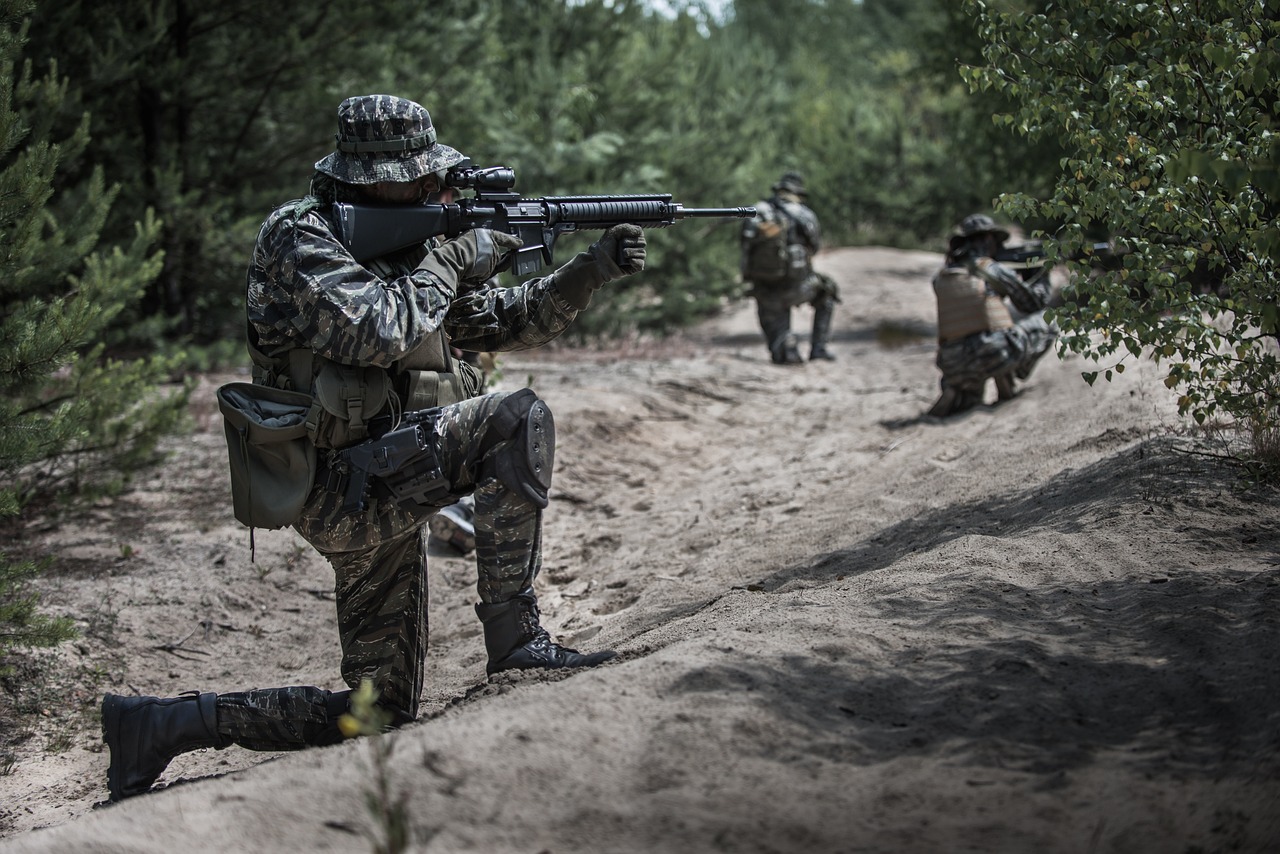
Natural Language Processing
Natural Language Processing (NLP) is a fascinating branch of artificial intelligence that focuses on the interaction between computers and humans through natural language. In military applications, NLP is proving to be a game changer by enabling military personnel to process and analyze vast amounts of textual data swiftly and efficiently. Imagine sifting through thousands of enemy communications, reports, and intercepted messages in mere seconds—this is the power of NLP in action. By employing sophisticated algorithms, the military can gain insights that were previously buried in mountains of text, allowing for quicker and more accurate decision-making.
One of the primary benefits of NLP in the military context is its ability to discern sentiment and intent behind communications. For instance, by analyzing the tone and context of enemy messages, military analysts can gauge the morale of opposing forces or identify potential threats before they escalate. This capability is akin to having a high-tech crystal ball that helps predict enemy actions based on their communications. Moreover, NLP can automate the tedious task of translating foreign languages, enabling real-time communication and intelligence sharing among allied forces.
The integration of NLP technology into military operations is not just about speed; it’s also about accuracy. By utilizing advanced machine learning models, the military can extract key information from unstructured data sources, such as social media posts, news articles, and even internal reports. This data extraction is crucial for understanding the broader context of conflicts and the sentiments of local populations, which can significantly influence military strategy. For example, if NLP tools identify a surge in anti-government sentiment in a specific region, military planners can adjust their strategies accordingly, focusing on diplomacy or humanitarian efforts rather than brute force.
Furthermore, NLP can enhance cybersecurity measures by monitoring communications for signs of cyber threats or misinformation campaigns. By analyzing patterns in language and communication styles, NLP algorithms can flag suspicious activity, enabling military cybersecurity teams to respond proactively. This capability is vital in today’s digital battlefield, where information warfare can be just as damaging as physical confrontations.
In conclusion, the application of Natural Language Processing in military operations is transforming how information is gathered, analyzed, and acted upon. By harnessing the power of NLP, military organizations can enhance their situational awareness, improve decision-making processes, and ultimately, ensure that they remain one step ahead of their adversaries. As this technology continues to evolve, its role in military strategy will only become more pronounced, paving the way for a future where data-driven insights lead to superior operational outcomes.
- What is Natural Language Processing (NLP)?
NLP is a field of artificial intelligence that focuses on the interaction between computers and humans through natural language, enabling machines to understand and interpret human language. - How does NLP benefit military operations?
NLP enhances military operations by enabling faster analysis of communications, sentiment detection, and real-time translation, which improves decision-making and situational awareness. - Can NLP help in cybersecurity?
Yes, NLP can monitor communications for signs of cyber threats or misinformation, allowing military cybersecurity teams to respond proactively to potential risks. - Is NLP only used in the military?
No, NLP is widely used across various industries, including healthcare, finance, and customer service, but its applications in the military context are particularly critical for national security.

Automated Surveillance Systems
In the ever-evolving landscape of military operations, are becoming a game-changer. These systems utilize advanced machine learning algorithms to analyze video feeds in real time, significantly enhancing the military's ability to detect and respond to threats. Imagine having a watchful eye that never tires, tirelessly scanning the horizon for any signs of danger. This is precisely what automated surveillance systems offer—an unyielding vigilance that complements human oversight.
One of the most impressive aspects of these systems is their ability to process vast amounts of visual data at lightning speed. Traditional surveillance methods often rely on human operators to monitor feeds, which can lead to fatigue and oversight. However, with machine learning, these automated systems can instantly identify potential threats, such as unusual movements or unauthorized personnel, and alert operators accordingly. This not only reduces the workload on human personnel but also increases the accuracy of threat detection.
Furthermore, these systems can learn and adapt over time. Through continuous training on diverse datasets, they improve their ability to distinguish between normal activity and suspicious behavior. For instance, if a particular area is frequently monitored, the system can establish a baseline of typical movements and flag anything that deviates from that norm. This is akin to having a seasoned detective who knows the usual suspects and can quickly spot an outsider in a crowd.
Another compelling feature of automated surveillance systems is their integration with other military technologies. For example, when combined with drone technology, these systems can provide aerial surveillance that is both comprehensive and dynamic. Drones equipped with machine learning capabilities can autonomously navigate complex environments, capturing high-definition video while analyzing the footage in real time. This synergy not only enhances situational awareness but also allows for rapid decision-making in critical situations.
Moreover, the implementation of these systems can lead to significant cost savings over time. By reducing the need for extensive human resources dedicated to surveillance, military organizations can allocate those resources to other pressing operational needs. The efficiency gained through automation can translate into a more agile and responsive military force, capable of adapting to the fast-paced nature of modern warfare.
In conclusion, automated surveillance systems represent a pivotal advancement in military technology. They enhance threat detection, reduce operator fatigue, and provide valuable insights that can inform tactical decisions. As these systems continue to evolve, the military's operational capabilities will undoubtedly become more robust, ensuring that they remain one step ahead in an increasingly complex battlefield landscape.
- What are automated surveillance systems?
Automated surveillance systems use machine learning algorithms to analyze video feeds in real time, helping military personnel detect threats quickly and accurately. - How do these systems improve military operations?
They enhance situational awareness, reduce the workload on human operators, and increase the accuracy of threat detection. - Can automated surveillance systems learn over time?
Yes, these systems can adapt and improve their detection capabilities through continuous training on diverse datasets. - What role do drones play in automated surveillance?
Drones equipped with machine learning can provide aerial surveillance, capturing high-definition video while analyzing it in real time. - Are there cost benefits to using automated surveillance systems?
Yes, by reducing the need for extensive human resources, military organizations can save costs and allocate resources more efficiently.

Logistics Optimization
In the realm of military operations, logistics is the backbone that supports every mission, ensuring that troops are equipped with the necessary resources at the right time and place. With the advent of machine learning technologies, logistics optimization has taken a giant leap forward. Imagine a world where military leaders can predict supply needs before they arise, where every piece of equipment is accounted for, and where maintenance schedules are automated to prevent any unexpected breakdowns. This is not just a dream; it’s becoming a reality thanks to the power of machine learning.
Machine learning algorithms analyze historical data and current operational conditions to forecast demand accurately. For instance, by examining past deployment patterns, weather conditions, and troop movements, these algorithms can predict what supplies will be needed and when. This predictive capability is crucial, especially in combat scenarios where every second counts. With optimized supply chains, military units can avoid the chaos of last-minute scrambles for resources, ensuring that soldiers are always ready for action.
Furthermore, the integration of machine learning into inventory management systems enhances visibility across the supply chain. It allows military logistics personnel to track inventory levels in real-time, identify shortages, and manage stock more effectively. This is akin to having a personal assistant who knows exactly what you need and when you need it, eliminating waste and ensuring efficiency. For example, if a particular part is running low, the system can automatically trigger orders to replenish stocks before they run out, thus maintaining operational readiness.
A significant application of machine learning in logistics is in predictive maintenance. Equipment failure can be catastrophic in military operations, leading to mission delays or even jeopardizing safety. Machine learning models analyze various data inputs, such as usage patterns and historical maintenance records, to predict when equipment is likely to fail. This allows military units to schedule maintenance proactively, ensuring that vehicles, aircraft, and other critical assets are always in peak condition. The result is decreased downtime and increased mission success rates.
| Benefit | Description |
|---|---|
| Cost Efficiency | Reduces unnecessary expenditures by optimizing resource allocation. |
| Timeliness | Ensures that supplies reach troops before they are needed, avoiding delays. |
| Enhanced Readiness | Maintains equipment in optimal condition, ready for immediate deployment. |
In conclusion, the role of machine learning in logistics optimization is transforming how military operations are conducted. By leveraging data-driven insights, military leaders can enhance their decision-making processes, streamline supply chains, and ensure that troops are always prepared for whatever challenges lie ahead. The future of military logistics looks bright, thanks to the innovative capabilities that machine learning brings to the table.
- How does machine learning improve military logistics? Machine learning enhances logistics by predicting supply needs, optimizing inventory management, and enabling predictive maintenance.
- What are the benefits of predictive maintenance in military operations? Predictive maintenance reduces downtime, increases equipment reliability, and ensures that military units are always operationally ready.
- Can machine learning algorithms adapt to changing conditions? Yes, machine learning algorithms can continuously learn from new data, allowing them to adapt to changing operational environments effectively.

Supply Chain Management
In the ever-evolving landscape of military operations, effective supply chain management is crucial. Imagine a well-oiled machine, where every cog and wheel works in perfect harmony to deliver essential resources to troops on the front lines. With the advent of machine learning, this once daunting task has transformed into a more streamlined and efficient process. By leveraging advanced algorithms, military logistics can now accurately forecast demand, ensuring that supplies are not just available, but are delivered precisely when and where they are needed.
The integration of machine learning into supply chain management allows military leaders to analyze vast datasets, which can include everything from historical supply usage to real-time consumption patterns. This data-driven approach helps in making informed decisions that enhance operational readiness. For instance, by predicting which supplies will be needed in upcoming missions, military units can avoid the pitfalls of overstocking or understocking, both of which can lead to costly delays and operational inefficiencies.
Moreover, machine learning algorithms can identify patterns in supply chain disruptions caused by various factors, such as weather conditions, political instability, or logistical bottlenecks. By understanding these patterns, military planners can develop strategies to mitigate risks and ensure that their forces are always equipped with the necessary resources. The ability to adapt to changing conditions is vital, especially in high-stakes environments where every second counts.
Let's take a closer look at how machine learning enhances various aspects of supply chain management:
| Aspect | Machine Learning Application |
|---|---|
| Demand Forecasting | Analyzing historical data to predict future supply needs. |
| Inventory Management | Optimizing stock levels based on usage patterns and mission requirements. |
| Logistical Planning | Streamlining transportation routes and methods for timely deliveries. |
| Risk Management | Identifying potential disruptions and developing contingency plans. |
Through these applications, machine learning not only enhances the efficiency of supply chains but also plays a pivotal role in ensuring that military operations can respond swiftly to dynamic situations. The agility provided by these technologies allows for a greater focus on mission objectives rather than being bogged down by logistical challenges.
As we look to the future, the role of machine learning in supply chain management will continue to expand. The military will increasingly rely on these technologies to not only maintain operational readiness but also to gain a strategic advantage over adversaries. In a world where every moment counts, the ability to deliver supplies with precision and speed could very well be a game-changer.
- How does machine learning improve supply chain management in the military?
Machine learning improves supply chain management by analyzing vast amounts of data to predict demand, optimize inventory, and enhance logistical planning, ensuring timely delivery of resources.
- What are the benefits of using predictive analytics in military logistics?
Predictive analytics helps military organizations anticipate future supply needs, reduce waste, and improve overall operational efficiency.
- Can machine learning adapt to unexpected changes in supply chain dynamics?
Yes, machine learning algorithms can identify patterns and adapt to changes, allowing military planners to develop strategies to mitigate risks and ensure resource availability.

Maintenance Prediction
In the fast-paced world of military operations, downtime can be a significant setback. That's where comes into play, leveraging the power of machine learning to foresee equipment failures before they happen. Imagine a scenario where a military unit is deployed in a remote area, and suddenly, a critical piece of equipment fails. The consequences could be dire, potentially compromising missions and putting lives at risk. However, with predictive maintenance, such situations can be mitigated.
Machine learning models analyze historical data from various equipment and machinery, identifying patterns that precede failures. By examining factors such as usage rates, environmental conditions, and maintenance history, these algorithms can predict when a piece of equipment is likely to need repairs. This proactive approach not only ensures that military units are always equipped with fully operational gear but also enhances overall operational efficiency.
For example, consider a military vehicle that has been deployed extensively in rugged terrain. Through continuous monitoring and data analysis, machine learning algorithms can identify signs of wear and tear that human operators might overlook. By predicting the likelihood of a breakdown, maintenance teams can schedule repairs during downtime, preventing unexpected failures during critical operations.
Additionally, the integration of IoT (Internet of Things) devices in military equipment allows for real-time data collection. Sensors embedded in machinery can relay information about performance and condition directly to maintenance systems. This data feeds into machine learning models, which continuously refine their predictions, becoming more accurate over time. The result? A military force that is not only prepared but also agile, capable of adapting to changing circumstances with minimal disruption.
| Benefit | Description |
|---|---|
| Reduced Downtime | Predictive maintenance minimizes unexpected breakdowns, ensuring equipment is always ready for action. |
| Cost Efficiency | By addressing maintenance needs proactively, military organizations can save on repair costs and extend the lifespan of equipment. |
| Enhanced Safety | Foreseeing equipment failures helps avoid accidents, keeping personnel safe during operations. |
Moreover, predictive maintenance fosters a culture of continuous improvement. As military organizations gather more data and refine their predictive models, they can identify not just when equipment will fail, but why it fails. This insight leads to better design choices, more effective training for operators, and ultimately, a more resilient military force.
In conclusion, the adoption of machine learning for maintenance prediction is a game-changer in military logistics. By staying one step ahead of potential failures, military units can maintain peak operational readiness, ensuring they are always prepared for the challenges that lie ahead. This proactive strategy not only enhances efficiency but also contributes to the overall effectiveness of military operations.
- What is predictive maintenance? Predictive maintenance is a proactive approach that uses data analysis and machine learning to predict when equipment is likely to fail, allowing for timely repairs.
- How does machine learning improve maintenance prediction? Machine learning algorithms analyze historical data to identify patterns and predict failures, leading to more accurate maintenance schedules.
- What are the benefits of predictive maintenance in the military? Benefits include reduced downtime, cost efficiency, enhanced safety, and improved operational readiness.
Frequently Asked Questions
- What is machine learning in the context of military applications?
Machine learning refers to the use of algorithms and statistical models to enable computers to perform tasks without explicit instructions. In military applications, this technology is used to analyze vast amounts of data, enhance decision-making, and improve operational efficiency across various domains such as logistics and intelligence analysis.
- How does machine learning enhance decision-making in the military?
Machine learning enhances decision-making by quickly analyzing large datasets to provide military leaders with insights that improve situational awareness. This allows them to make informed decisions in real-time, significantly increasing operational effectiveness on the battlefield.
- What role does machine learning play in intelligence analysis?
In intelligence analysis, machine learning facilitates the rapid processing of information, helping to identify patterns and predict enemy movements. This capability significantly enhances strategic planning and threat assessment, allowing military personnel to stay one step ahead.
- Can you explain data mining techniques in military contexts?
Data mining techniques powered by machine learning allow military analysts to sift through massive datasets, uncovering hidden insights. These insights help spot trends and anomalies that inform tactical decisions, ultimately leading to better outcomes in military operations.
- What is predictive analytics, and how is it used in the military?
Predictive analytics involves using historical data to anticipate future scenarios. In the military, this technique allows organizations to prepare and adapt strategies proactively, ensuring they can respond effectively in dynamic conflict environments.
- How does natural language processing (NLP) benefit military operations?
NLP applications help analyze communications and documents, allowing military personnel to understand sentiments and intentions behind enemy communications. This understanding is crucial for making informed strategic decisions.
- What are automated surveillance systems, and how do they work?
Automated surveillance systems leverage machine learning to analyze video feeds in real-time, identifying potential threats. This reduces the workload on human operators during reconnaissance missions, allowing them to focus on critical tasks.
- How is machine learning improving military logistics?
Machine learning is revolutionizing military logistics by optimizing supply chains, improving inventory management, and predicting equipment maintenance needs. These advancements enhance overall operational readiness, ensuring that troops have the necessary resources at the right time.
- What is supply chain management in the military context?
Supply chain management in the military involves using advanced algorithms to forecast demand and streamline supply chains. This ensures that troops receive the necessary resources when and where they are needed most, improving mission success rates.
- How does predictive maintenance work in military operations?
Predictive maintenance uses machine learning to forecast equipment failures, allowing military units to conduct timely repairs. This reduces downtime and maintains high operational efficiency, ensuring that equipment is always ready for action.


